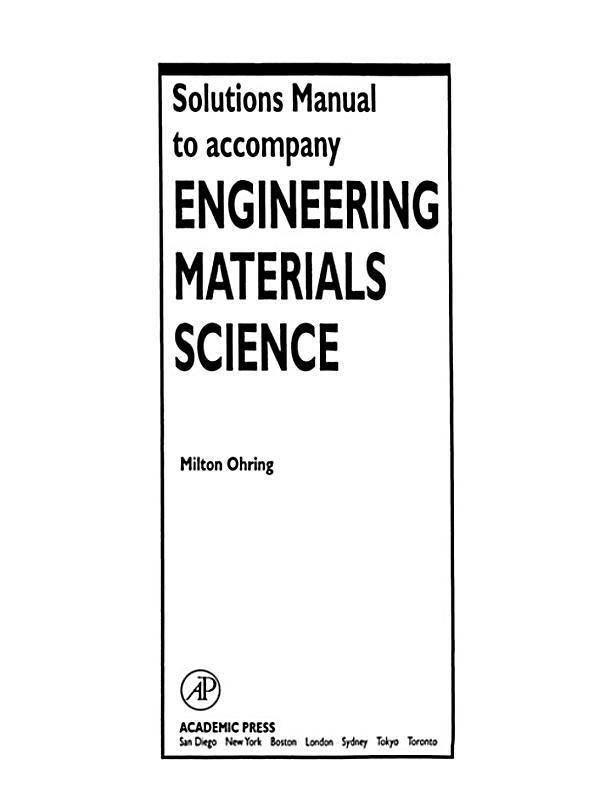Engineering Materials 1 Solutions Manual
Purchase Solutions Manual to accompany Engineering Materials Science - 1st Edition. Print Book & E-Book. ISBN 980, 086. Solutions Manual: Engineering Materials I Recycling The fraction of material recycled is obviously important. Products may be re-designed to make. Jones is co-author of Engineering Materials 1 and 2 and lead author for the 3rd and 4th editions. He was the founder editor of Elsevier's journal Engineering Failure Analysis, and founder chair of Elsevier's International Conference on Engineering Failure Analysis series.


Solutions Manual to Accompany Engineering Materials Science provides information pertinent to the fundamental aspects of materials science. This book presents a compilation of solutions to a variety of problems or issues in engineering materials science. Organized into 15 chapters, this book begins with an overview of the approximate added value in a contact lens manufactured from a polymer. This text then examines several problems based on the electron energy levels for various elements.

Engineering Materials 1 Ashby Solution Manual
Other chapters explain why the lattice constants of materials can be determined with extraordinary precision by X-ray diffraction, but with constantly less precision and accuracy using electron diffraction techniques. This book discusses as well the formula for the condensation reaction between urea and formaldehyde to produce thermosetting urea-formaldehyde. The final chapter deals with the similarities between electrically and mechanically functional materials with regard to reliability issues.
Engineering Materials 1 University Notes
This book is a valuable resource for engineers, students, and research workers. Table of Contents. Milton Ohring, author of two previously acclaimed Academic Press books,The Materials Science of Thin Films (l992) and Engineering Materials Science (1995), has taught courses on reliability and failure in electronics at Bell Laboratories (AT&T and Lucent Technologies). From this perspective and the well-written tutorial style of the book, the reader will gain a deeper physical understanding of failure mechanisms in electronic materials and devices; acquire skills in the mathematical handling of reliability data; and better appreciate future technology trends and the reliability issues they raise.